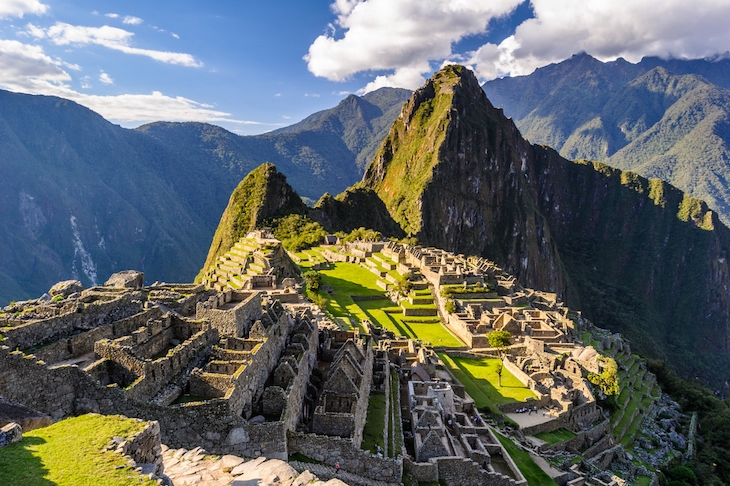At the top of Machu Picchu last week, I saw two wide-winged condors swoop over Sacred Valley through a rainbow that curved between two holy mountains. Weary after many books and travels, I felt restored and inspired by this magic. There was hardly anyone in Machu Picchu; its cliffs vertiginous, its cloud jungle lushly impenetrable, it was discovered by outsiders only a century ago. Built as a royal estate and shrine by Inca conqueror Pachacutec around 1450, during our Wars of the Roses, no one knows when or why it was abandoned — because of Spanish conquest, or decades earlier due to civil war?
Earlier I set out from Cusco, once the Inca capital, a holy city that in some ways reminded me of Jerusalem. Its Temple Mount was the Temple of the Sun, once gleaming in sheets of gold. I was in Arequipa and Cusco for the Hay Festival. When the planes were cancelled, we had a ten-hour drive via dirt road over the Andes, through mountain villages where the people still wear a mix of indigenous costume and wide-brimmed Spanish hats. They farm terraces, raise llamas, and speak Quechua.
Before the trip, I attended the spectacular centenary dinner for the Balfour Declaration at Lancaster House, with descendants of many of its creators: Lloyd Georges, the photographer Christopher Sykes, grandson of Sir Mark Sykes. The dinner was hosted and organised by Jacob Rothschild and Roderick Balfour, who entered with the prime ministers of Israel and Britain. Jeremy Corbyn refused to attend but sent deputy Tom Watson and shadow foreign secretary Emily Thornberry. In his speech, Benjamin Netanyahu claimed imminent developments in the peace process; no one was convinced but he was surely hinting at the potential of the new relationship between Israel and Saudi Arabia. Even though the Saudis would love to manipulate Jerusalem into a war against Hezbollah, client of their mutual enemy Iran, Israel is becoming ever more part of the Arab Middle East. One surprise was that Theresa May gave the best, most passionate speech of her career. If she could do it there, why doesn’t she do it more often?
Mugabe’s resignation fascinates because the fall of tyrants is always a family story, decline of the father, writ large. What a strange creature he is. Who else would give a speech of such orotundity that it contained archaic words like ‘pith’, ‘collegiality’, ‘comported’, ‘untrammelled’ and ‘vicissitudes?’ No British politician has used such language since the 1950s but Mugabe, well-educated by Jesuits, has the pomposity of a pedantic poetaster leavened with Marxist-liberationist arcana. As a teenager I had a weakness for freedom fighters. When Mugabe came to London to negotiate independence, I vanished from home to stand outside his hotel. I was very disappointed that he looked like a dorky teacher. My parents were nervous because when I was about 11, fascinated by the military prowess of General Giap, I had tried to defect to Vietnam. Its embassy was in our street, emblazoned with a red-starred flag. One day the temptation proved irresistible. Luckily I entered the basement where the staff lived and they gave me a bowl of their rice. Eventually I got bored and went home. That was end of my Ho Chi Minh Trail.
It is a characteristic of potentates that they don’t succumb to peaceful retirement. Instead they hold power in their hoary fists as judgment and grip weaken, destroying any successors except family members. In Zimbabwe, Mugabe’s instinct to crown his wife Grace almost spawned yet another republican monarchy to join those of Cuba, North Korea, Equatorial Guinea and Syria — but went too far.
With popular rulers, the wife can become the guardian of their greatness: Peter the Great was succeeded by his wife, Catherine I. Sometimes the wives are an improvement. The wife of Tsar Peter III became Catherine the Great — though he had to be strangled for her to pull it off. And opinion polls say that if beautiful Michelle Obama ran against Trump, she’d win.
Family politics always resembles a Mafia clan: I am gripped by the brilliant Italian drama series set in Naples, Gomorrah, which has a brutal Shakespearean, even Zimbabwean, poetry to it. King Lear, again.






Comments